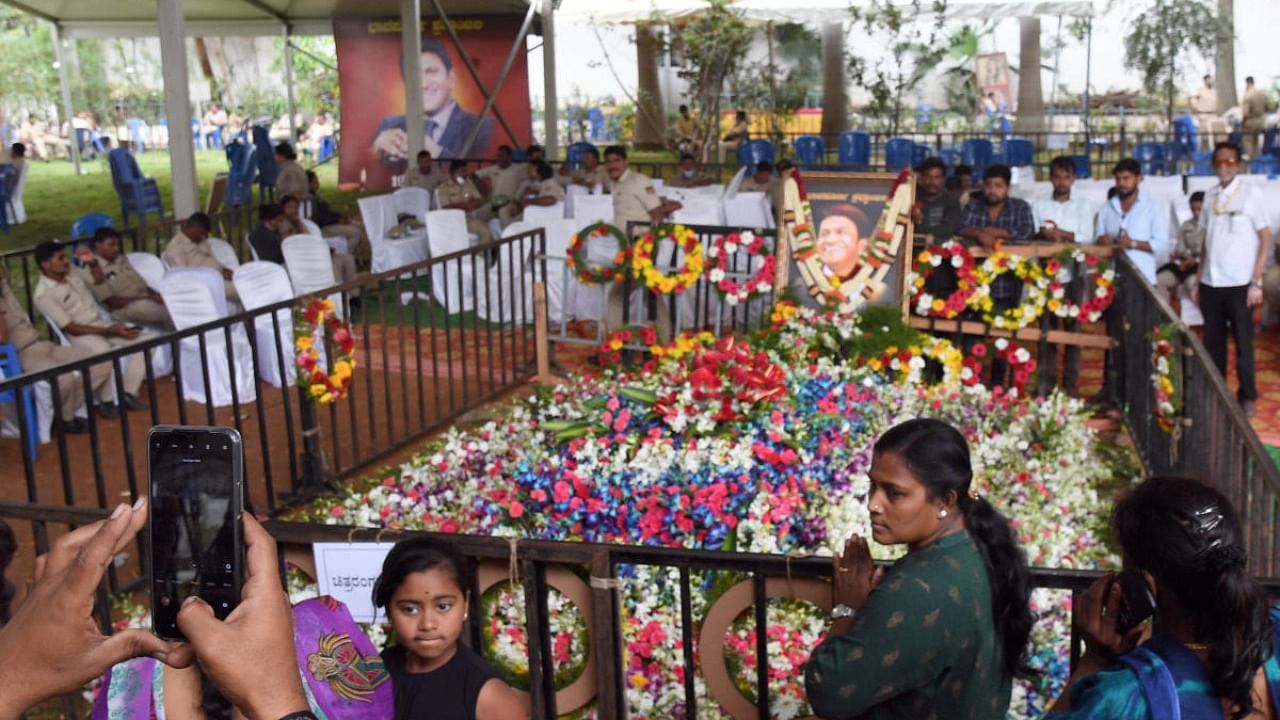
Actor Puneeth Rajkumar’s death has shone a harsh light on Karnataka’s emergency medical response system. One citizen’s group has now called on the government to deploy defibrillators in public spaces to prevent future deaths.
Rajkumar Dugar, founder and convenor of the community action group ‘Citizens for Citizens’ told DH that that Kannada superstar’s death could have been potentially averted had the government acted on a proposal made by the group in January 2020 to deploy Automated External Defibrillators (AEBs) across public spaces in the city, such as the head office of the Bruhat Bengaluru Mahanagara Palike (BBMP), metro, large bus stations and even Cubbon Park, which lacks a first-aid centre.
The actor died due to ventricular fibrillation, which could have possibly been reversed by delivering a defibrillation shock, according to cardiologists.
“Defibrillation machines must be deployed but more importantly, the location of these AEBs must be widely known to the public so that they can be accessed in an emergency,” Dugar explained.
However, public health experts cautioned that a systematic revamp of the state’s first aid ecosystem is needed. “Whenever there is a crisis, people always turn to a solution that is technological, but unless that technology is incorporated into the larger ecosystem of first-aid response, it will not be of any help,” said Dr Prashant N S, Assistant Director (Research), Institute of Public Health.
“There needs to be widespread societal engagement in first aid, with training in schools and colleges. Government staff such as BMTC bus drivers and conductors, post office workers, railway personnel plus segments of the public have to be versed in basic first-aid treatments such as cardiopulmonary resuscitation (CPR),” he added.
Dr Arvind Kasthuri, Head, Community Medicine, St John’s National Academy, said there is confusion among the public about what must be done if a person collapses. “Attenders should call for nearby help, try to stabilise the patient and call 108,” he said, but added that while the state has the wherewithal to send an ambulance to the site within a few minutes, not many ambulances have life-saving equipment.
Sources in 108 concurred, saying that of the service’s 711 ambulances in the state, only about 325 are Advanced Life Saving (ALS) machines, with oxygen, a ventilator, defibrillator and other equipment.
Worse, there are bottlenecks in the coordination of emergency services. “When a person calls 108, it is usually in a state of panic. Unless the patient’s vitals are provided on call, only a basic ambulance is sent. Then, the ambulance staff has to inform the destination hospital about the patient’s condition to help medical staff prepare. Many times, this does not happen,” a source said.
The source added that there is also a bottleneck in skills upgradation, especially now that there is a new tender which could see the state procure 1,800 ALS ambulances with advanced diagnostic equipment.